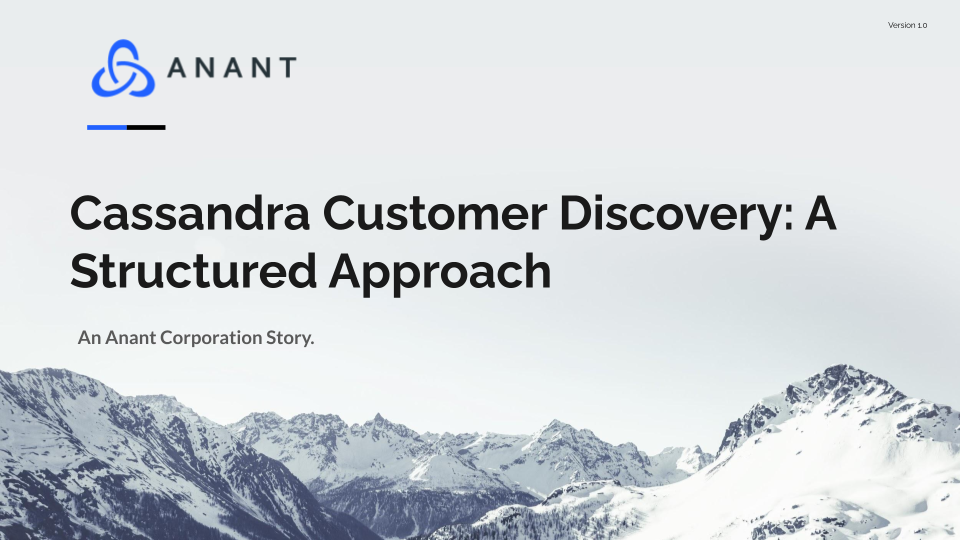As more and more companies are transitioning to Cassandra and other NoSQL databases, what are some strategies to drive customer discovery and provide new opportunities for growth?
Table of Contents
- Who are the potential clients?
- How can we partition them?
- What are their characteristics?
- What is the optimized strategy?
- Next Steps
Customer Discovery: Who are the potential customers?
While Cassandra is a relatively new database, more and more companies are transitioning from traditional SQL databases like Oracle to NoSQL databases like Cassandra to match their data storage needs.
According to LinkedIn, below are just some of the companies actively hiring positions related to Cassandra:

How can we partition them?
However, not all companies above are the same during the customer discovery process. Below, I proposed a partition method that identifies key differentiators in order to facilitate a structured approach in the future.

We can see the main differentiator here is the client source. While some companies are seeking talent themselves, others might be seeking talent through a recruiter, or through the help of a consulting firm that seeks technical assistance.

What are their characteristics?
For any company looking to expand its customer base, these three types of clients have their own pros and cons. That is why I have introduced 5 characteristics to quantify their pros and cons.
- Customer discovery: How easy it is to find potential customers in this category using open resources?
- Project oppurtunities: Are projects typically narrowly defined? Open to more oppurtunities?
- Profit sharing: Will any profits be shared with third parties?
- Retaining customer: Are there oppurtunities to work with the customer long term?
- Future outreach: Can this client potentially bring us more clients?
Direct Clients

Direct clients are always great for business. However, one drawback is the limited information on the open market. This makes it harder for companies that are just starting with the process. On the other hand, there should be ample project opportunities due to the usually loosely defined scope. Similarly, profit sharing will be minimal due to the lack of other partners. Even better, retaining customers should be fairly easy due to the strong direct interaction. Nonetheless, direct clients lack to reach to other potential customers.
Recruiters

Recruiters are often the “middle man” who searches for talent on behalf of clients. With a relatively large industry, quality recruiters can be hard to find. Even more, the projects recruiters present are typically well defined in scope and have limited opportunities for expansion. In addition, recruiters often take a cut in the budget, though it can be negotiated. Retaining customers can also be hard due to the limited relationship with the end client. However, recruiters often have a large number of clients so it can be beneficial when expanding.
Consulting Firms

On the other hand, consulting firms are different from recruiters. Like recruiters, some of the well-known consulting firms are also limited. On the other hand, the scope of the projects, while still limited, may increase if the firm sees fit, though not in our control. Even more, the profit-sharing portion is also low since the consulting firm usually gets paid separately. Unlike recruiters, consulting firms usually have long-term customers for which their long-term needs may translate to a longer retainer. While the future outreach is not as good as working with a recruiter, consulting firms also have a pool of clients.
Next Steps

Taking all the above information into account, I propose a future roadmap that plans out objectives in the short, medium, and long term.
In the short term, try to strengthen the relationships with existing clients. They will be the foundation of your expansion. Having a stable relationship with direct clients helps establish a base of continuous revenue. In the meantime, start approaching recruiters and consulting firms looking for potential strategic partners.
In the medium term, aim to have 1-2 stable recruiting/consulting partner that brings in high-quality new clients. Focus on establishing connections regardless of channels promoting customer ownership.
In the long term, recruiters/consulting firms should slowly phase out as the customer relationships are stable, supporting long-term customer discovery growth.
Cassandra.Link
Cassandra.Link is a knowledge base that we created for all things Apache Cassandra. Our goal with Cassandra.Link was to not only fill the gap of Planet Cassandra but to bring the Cassandra community together. Feel free to reach out if you wish to collaborate with us on this project in any capacity.
We are a technology company that specializes in building business platforms. If you have any questions about the tools discussed in this post or about any of our services, feel free to send us an email!




